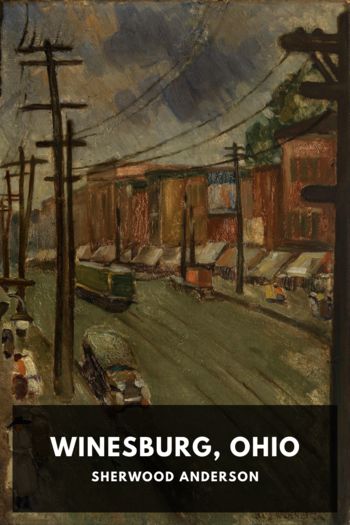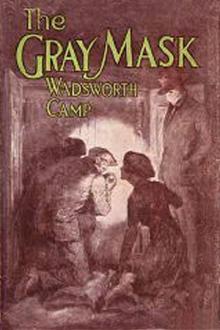the Spy (2010), Cussler Clive [free e reader TXT] 📗

- Author: Cussler Clive
Book online «the Spy (2010), Cussler Clive [free e reader TXT] 📗». Author Cussler Clive
If he tried to recruit anyone to carry the glass box, the word would flash to Tommy Thompson that Iceman Weeks was back in town. Might as well tie his own hands behind his back and jump in the river. Save Tommy the trouble. Because you didn't have to be a brain to figure out that Eyes O'Shay would order the Commodore to kill the man who'd been spotted by a Van Dorn dick while doing the killing Eyes had paid for. Weeks could swear until he was blue in the face that he would never squeal. O'Shay and Tommy would kill him anyway. Just to be on the safe side.
At least Tommy had written back that he approved of him killing Isaac Bell. Of course he didn't offer to help. And it went without saying that if Tommy and Eyes saw a chance to kill him first, they wouldn't wait for him to take a crack at Bell.
Wiltse bunted in the ninth and Bridwell doubled. When the inning ended New York had two more runs, Brooklyn did not, and Weeks was leading the rush for the Fifth Avenue Elevated with a fair notion of how to transport the snake to the Yale Club.
He needed a suit of college man clothes, a steamer trunk, a pane of glass, a bellboy with a luggage cart, and directions to the fuse box.
Chapter 16
WHO IS THAT OFFICER? ISAAC BELL DEMANDED OF THE Protection Services operative assigned to guard Farley Kent's drawing loft in the Brooklyn Navy Yard.
I don't know, Mr. Bell.
How did he get in here?
He knew the password.
Van Dorn Protection Services had issued passwords for each of the Hull 44 dreadnought men it was guarding. After getting past the Marines guarding the gates, a visitor still had to prove he was expected by the individual he claimed to be visiting.
Where is Mr. Kent?
They're all in the test chamber working on that cage-mast model, the Protection Services operative answered, pointing across the drawing loft at a closed door that led to the laboratory. Is there something wrong, Mr. Bell?
Three things, Bell answered tersely. Farley Kent is not here, so he does not seem to have expected that officer to visit. The officer has been studying Kent's drawing board since I walked in. And in case you haven't noticed, he is wearing the uniform of the Czar's Navy.
Them blue uniforms look all the same, the operative replied, reminding Bell that few PS boys possessed the brains and moxie to climb the ladder to full-fledged Van Dorn detective. Besides, he's carrying them rolled-up drawings like they all do. You want I should question him, Mr. Bell?
I'll do it. Next time someone walks in unexpected, assume he's trouble until you learn otherwise.
Bell strode across the big loft past rows of drawing boards that were usually occupied by the naval architects testing the cage mast. The man in the Russian officer's uniform was so engrossed in Farley Kent's drawing that he gave a startled jump and dropped the rolls he had tucked under his arm when Bell said, Good morning, sir.
Oh! I do not hear approach, he said in a heavy Russian accent, scrambling to pick them up.
May I have your name, please?
I am Second Lieutenant Vladimir Ivanovich Yourkevitch of His Majesty Czar Nicolas's Imperial Russian Navy. And to whom do I have the honor--
Have you an appointment here, Lieutenant Yourkevitch? The Russian, who looked barely old enough to shave, bowed his head. Sadly, no. I am hoping to meet with Mr. Farley Kent.
Does Mr. Kent know you?
Not yet, sir.
Then how did you get in here?
Yourkevitch smiled, disarmingly. With entitled demeanor, impeccable uniform, and crisp salute.
Isaac Bell did not smile back. That might get you past the Marines guarding the gate. But where did you get the password to go to Kent's drawing loft?
In bar outside gates, I meet Marine officer. He tells me password.
Bell beckoned the Protection Services operative.
Lieutenant Yourkevitch will sit on that stool, away from this drawing board, until I return. To Lieutenant Yourkevitch he said, This gentleman is fully capable of knocking you to the floor. Do as he tells you.
Then Bell crossed the loft and pushed open the door to the test chamber.
A dozen of Kent's staff were circled around a ten-foot-tall model of an experimental battleship cage mast. The young naval architects held wire snips, micrometers, slide rules, notepaper, and tape measures. The round, freestanding structure, which stood on a dolly, was made of stiff wires that spiraled from base to top in a counterclockwise twist and were braced at intervals by horizontal rings. It represented, in miniature, a one-hundred-twenty-foot-high mast made of lightweight tubing and was correct in every detail down to the mesh platforms within some of the rings, electric leads and voice pipes running from the spotters' top to the fire director's tower, and tiny ladders angling up the interior.
Two of Kent's architects held ropes attached to opposite sides of the round base. A tape measure strung between the walls passed next to the top. An architect on a stepladder watched the tape closely. Farley Kent said, Portside salvo. Fire!
The architect on the left side jerked his rope, and the man watching the tape called out how much the tower had swayed. Six inches! was recorded.
At twelve-to-one, that's six feet! said Kent. The spotters on top better hold on tight when the ship fires her main turrets. On the other hand, a tripod mast will weigh one hundred tons, while our cage of redundant members will weight less than twenty-a huge savings.





Comments (0)